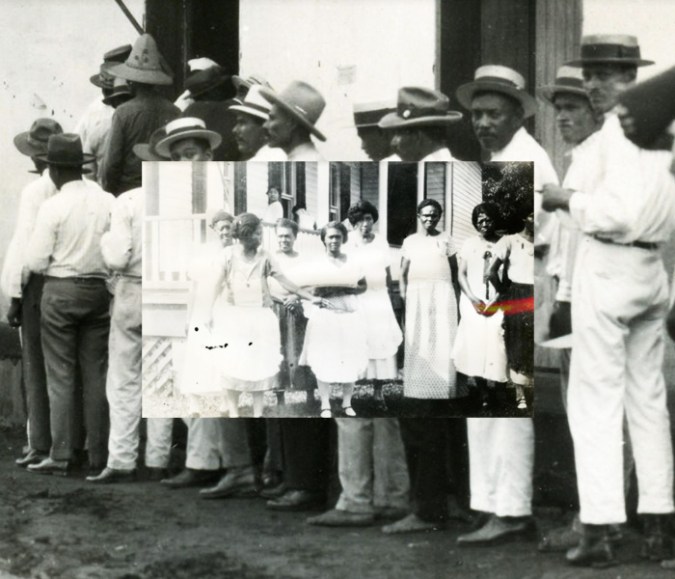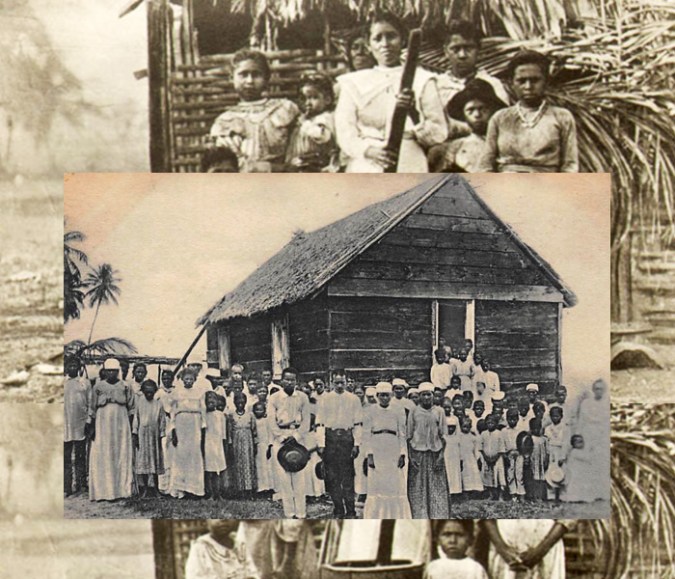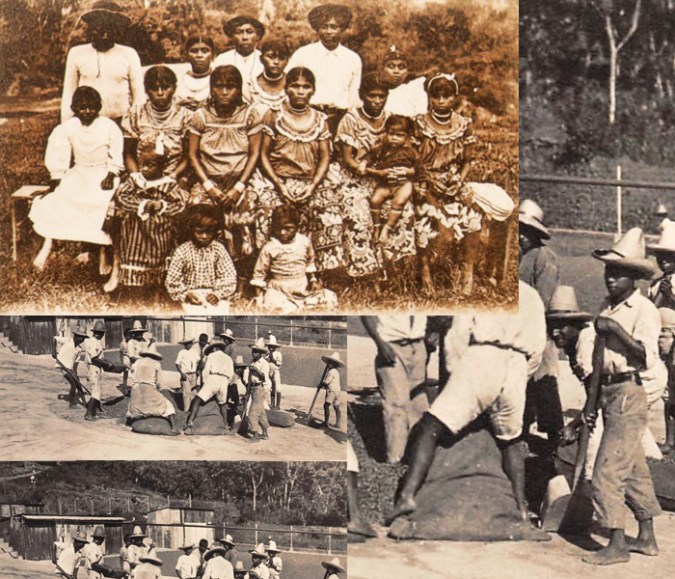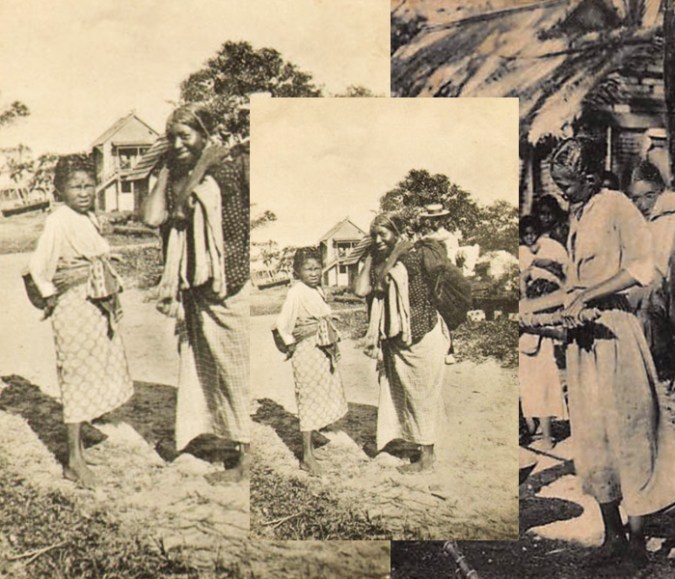In a series of sepia-toned postcards with the words “Saludes from Bluefields, Nicaragua” or “Recuerdos de Nicaragua,” you can see how colonizers from the Moravian Church – a Christian church in Germany – imposed their European-style of clothing on the Afro-Indigenous communities living on the Caribbean coast of the Central American country. The artifacts – which disparagingly describe the indigenous people as “noble savages” and others as “heathens” – are among the only images documenting the region’s Afro-indigenous people during the early and mid-1900s. For Jasmine Chavez Helm, they are a crucial part of her current research.
Chavez Helm is a full-time fashion archivist who also co-founded and co-hosts Unravel: A Fashion Podcast. The podcast – which comes alive in collaboration with textile conservator Dana Goodin and fashion and history scholar Joy Davis – is a way to expand the conversation beyond traditional fashion media and history into the intersections of race, politics, and culture.

“We wanted to have people that fashion isn’t just something for rich white people,” she tells me. “All over the globe in Asia, Africa, Brazil, throughout Latin America, and of course in the United States so many different cultures express themselves through clothing in different ways.”
Her love of fashion comes from watching, with a concentrated energy, as her mom rummaged through vintage and thrift stores. Her research into the Bluefields stems from her father’s Afro-Nicaraguan heritage – a side of herself she’s only recently reconnected with.
Chavez Helm is in the early stages of researching fashion history in the Bluefields coastal. She’s focusing on how colonization by the Moravians stripped the Afro-Indigenous communities of their traditional garments.

Motivated partially by her father’s rejection of his own Blackness, Chavez Helm has spent the last three years educating herself on Nicaragua’s little-discussed Black history. She learned of the close ties the Black community has to the indigenous population. The average Miskito, an indigenous ethnic group in Central America, is between 8 and 20 percent of African descent. Nicaragua has had a presence of African descendants since at least the 1600s.
But finding this information hasn’t come easily. She sits at her computer for hours at a time going down the rabbit hole that is eBay to track down vintage postcards. Her self-taught history lessons are helping her uncover the evolution of what people in the Bluefields wore in the past and present. Photography was first coming about at the turn of the century when the postcards from the Moravian colonizers were being sold to tourists. In one, a group of Miskito girls press sugar cane while wearing a wrapped skirt. In another, as Chavez Helm notes, the style of dress leans more European.

What she’s ascertained is that the Moravians, whose original intention was to convert the Bluefields people to Christianity, discouraged them from wearing their traditional clothing and pushed them to adopt European fashions. The colonizers also discouraged the tribal groups from making their traditional cloths, light brown and stiff in texture, for clothes and textiles. Instead, they were forced to create tourist items.
Now in YouTube videos and images, the Afro-indigenous populations are more commonly seen in jeans and tees. Western style of dress is widespread, though some still wear more traditional clothing.
Her research comes at a time when the land, homes, and crops of this community is at risk. This group is trying to preserve its homeland and way of life as outside forces threaten their culture. The Bluefields, located on Nicaragua’s southeast coast, is the capital of the South Caribbean Autonomous Region. Without consulting the region’s people, and despite its autonomy, part of the Bluefields territory will be used as a pathway to a canal that at three times as long and twice as deep will overshadow the Panama Canal.
“It’s already been hundreds of years that so many stories have been neglected to be told or shared or that material culture has been failed to be collected and preserved that if we don’t do it now, it could be lost forever,” she says.

Chavez Helm’s research will culminate in June when she presents at the Global Fashion and Photography conference. As she continues to delve into the fashion history of the Bluefields, she’s cautious of the information she acquires since much of what’s documented about them comes from a eurocentric colonizer perspective.
“And I may be of (Afro-Nicaraguan) descent, but I’m still negotiating how to respectfully write about them, their culture and its history in a way that’s respectful and empowering,” Chavez Helm says.
Chavez Helm said that even after the conference, it’ll be an ongoing project. Though she hasn’t set up a website to document her findings, she will likely share her findings on her podcast. In the future, she hopes to spend time in the Bluefields region to conduct original research, find artifacts, and document oral histories. But funding is a continued struggle since everything has come out of her own pocket so far.
“Now is a good time to bring awareness to their history because they’re busy fighting for themselves,” Chavez Helm says. “Maybe I can help by dissecting their history and how its led them to the place they are in at the moment.”




